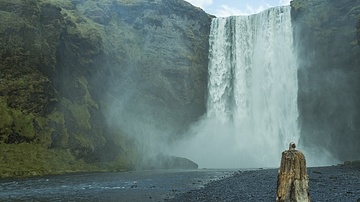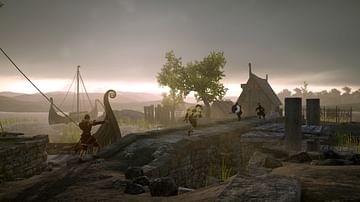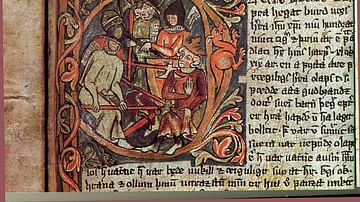Early medieval Iceland, the Viking colony, was a democratic and egalitarian society, but the scarcity of resources and the rough environment created competition, where local chieftains resorted to different tactics to acquire wealth and money, from using their advantage as men of the law and representatives of the people to the often complex social relationships they had with their followers.
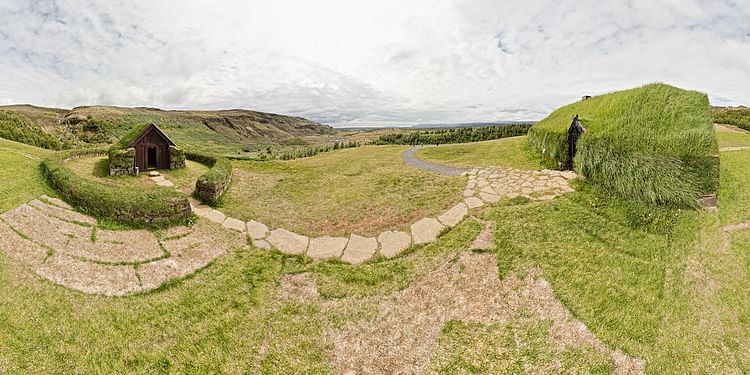
Economic Challenges
To understand the economic challenges, we need to keep in mind that the short growing season in the north especially, was variable and mostly meant moss and lichens. Birch, Iceland's only tree, suffered from the changing temperatures and then the settlers' woodcutting. The settlers were probably pleased initially since the land was easy to clear for farming, but very soon the island started showing its boundaries. Overgrazing caused erosion, the cooling of the climate affected productivity, no new farming technologies were developed. In the south, it was possible to grow small crops of cereals, but the farmer (bændr) usually turned to sheep and cattle. Hay was vital, thus fertile meadows as well, turning land into the most desired commodity and the source of many disputes in the sagas.
On this tiny island, one viable solution to increase one's wealth was to simply steal someone else's property. The income a chieftain, a local leader (goði), could legally acquire by fulfilling his legal duties was simply too low and unsteady to support followers, offer gifts, and hold feasts. According to the Sturlunga Saga, a collection of stories about the powerful clan of the Sturlungs in the mid-12th century, there does appear to have been a tax of support for local leaders, the so-called 'sheep-tax' (sauðatollr). It seems to have been forcibly collected at the end of the free state, that is before Iceland was brought under the control of the Norwegian crown, by local leaders in need of funding. The more aggressive stance against farmers and merchants at this time was not limited to Iceland as Europe, in general, was dealing with inflation.
Moreover, there was never enough silver in Iceland, and so they had to figure out early on different substitutes: cloth, dairy products, livestock. Vaðmál (homespun cloth) became pretty common, replacing silver as a unit of exchange. Prices were set in standardized ounces and discussed at local assemblies. The value of cows was also set at these assemblies, which meant prices could be different from region to region.
Sources of Income
Most economic information we have comes from the collection of laws known as the Grey Goose Laws (Grágás), introduced to Iceland in the 920s and modelled on those from the Norwegian west coast. There were apparently two legally prescribed taxes, the thing tax, the tax farmers paid to the local chief so he could take part in the local assembly, the thing (therefore called thingfararkaup), and then the temple tax, collected from farmers who wanted to attend services (hoftollr). According to Islendigabók (Book of the Icelanders), Gizurr, Iceland's second bishop, intended to introduce a law "that everyone should reckon up and value all their property and swear an oath that it was correctly valued, whether it was in land or in movable possessions, and pay a tithe on it afterwards" (ch. 10). He determined that there were about 4560 property-owning farmers at the time who were paying the thingfararkaup, individuals who looked after their own interests.

The wealth of the chieftains depended on their relationship with these people. When they gathered in spring at the local parliaments, chieftains could require every ninth farmer among their followers to join them, and then collected the tax from those staying home. It was probably not much, given the high costs of the journey and the payment to the farmers who did take part. Too high of a fee placed on the followers (thingmenn) could have meant deterioration of the relationship with them, a bad reputation for the chieftain, or even losing one's followers. Reciprocity and cooperation were the institutional basis of the island which lacked a state. Farmers were required by law to align with a chieftain to have a voice in legal matters, and chieftains needed thingmenn to increase their status. Medieval Icelandic government was built on a certain hierarchy of reciprocal relations, and the roots of its decline may be found in a shift towards domination, chieftains slowly became stronger and not only by fee collecting.
The other option, the temple tax mentioned above, is confirmed in stories such as Eyrbyggja saga (Saga of the People of Eyri) or Vápnfirðinga saga (Saga of the People of Weapon’s Fjord). The latter mentions that "all the farmers were required to pay the temple a tax" (ch. 5). After conversion, tithes became a source of income for chieftains owning churches, who received one-half of them, which may explain why the law was easily accepted in Iceland. Usually, tithes meant a 10% tax on gross income, but in Iceland, they were a 1% property tax. On the other hand, the chieftain had the obligation to take care of the church and pay the priest, and, in the beginning, even being allowed to become the priest himself. The tax on land imposed by the Church was profitable for both spiritual leaders and chieftains.
Over the past two centuries, many studies pointed out that the position of a chieftain implied more expenses than gains, thus not being that lucrative in the period between the 900s and 1200s. The main difference between the thing tax and the sheep tax was that the latter seems to have been a more general and profitable levy, though inconclusive how regular. Farmers met the requirement with not that much excitement, and they could protest by refusing to provide the chieftains with new supplies.
Besides taxes, chieftains (goðar) had other privileged means to amass a larger fortune, for example, they had the right to set prices on goods sold by foreign (mostly Norwegian) merchants. The Grey Goose Laws state:
It is prescribed in our laws that men shall not buy foreign wares from seafaring traders at ships at dearer rates than those decided by the three men selected to set them within the limits of each district. (ch. 167)
Men who bought before prices were set or at paid higher prices were to be prosecuted at a district court. It is uncertain how lucrative this might have been since the merchants could simply pick another chieftain to trade with. It was nevertheless an important privilege because imported goods could represent valuable gifts in a society where gift-giving and hospitality ensured political power. Sometimes the contact with the merchants could turn out violent, as the case in The Saga of the People of Weapon’s Fjord, where two chieftains, Brodd-Helgi and Geitir, murder a Norwegian after refusing to lodge with the former and then split his goods. Disputes over prices became more common after 1200, worsened by the Icelanders' inferior position to negotiate. Whatever their resistance to paying the prices, they rarely had a choice.
Power Begets Power
Other possibilities were courts of confiscation, féránsdómr, which góðar could manage against a reasonable fee. The payment was larger for lawsuits against outlaws, and if the chieftain himself was part of it, he could even receive the property of the outlaw. There are further examples of irregular income, one of them being the property of a dead man with no kin in Iceland. According to the Grágás:
And if they are living in huts and a man dies without having a partner, then the chieftain to whose assembly group the householder belongs who owns the land on which they are living has the right to take the property. If a man is a householder here and dies with no heir here in the country, then the chieftain to whose assembly group he belonged has the right to take the property. (ch. 120)
In his role as an arbitrator or advocate, a chieftain could settle issues regarding inheritance or property rights. Although every family had the freedom to choose how to manage their affairs, people resorted to the chieftains' legal knowledge and diplomatic approach, and chieftains used their lawgiving power and social networking to reap financial benefits. Well-off farmers also had the chance to increase their wealth through renting land to tenants or, after 1097, controlling church farmsteads. In this sense, the distribution of wealth was indeed more egalitarian in Iceland than in the rest of medieval Europe.
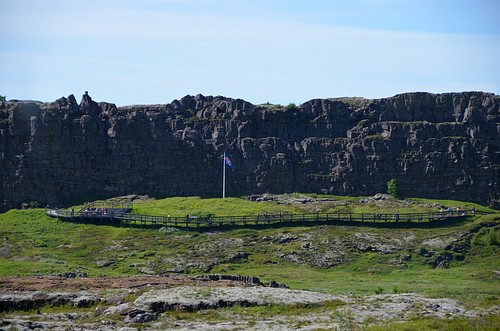
The basis of regular taxation, as we have seen, was provided by the tithe. Chieftaincy, that is owning an office that enabled one to nominate judges at the General Assembly, sit in the Law Council, or, in certain cases, prosecute, was considered property until then and could be bought and sold. By considering it as power and not wealth, the Church exempted it from taxation. Owning a farm on which a church stood (staðir) also freed one from taxes. Important families would donate parts of their land to the Church and gain administrative rights over it. The person who controlled a farmstead with a church could collect two-quarters of the church tax if someone in the family was ordained as a priest. Farmers who had the possibility to build a church could also benefit from this, and so managing clerical farmsteads did not alone put them chieftains in a domineering position.
The chieftains' economic power was only increased by conversion, but before that, it derived from political influence, no matter how informal. At the end of the 12th century, chieftains tried to amass local churches, chieftaincies, and followers, to establish themselves as stórgóðar, the great rulers. Power tended to concentrate, and bishops and chieftains even attempted to raise small armies. The political struggle intensified, and some of the local assemblies were even put off because one person was owning multiple offices. The chieftains, instead of remaining representatives of the farmers, increasingly became warlords, and their infighting ended up in the collapse of the island's independence.





